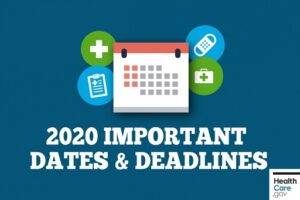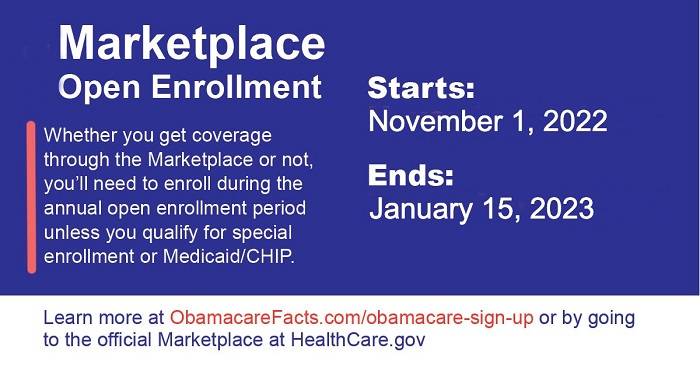Open enrollment for health insurance is a crucial time for individuals and families to sign up for or make changes to their health insurance plans. It’s an annual period during which you can enroll in a new plan, switch to a different plan, or make adjustments to your existing coverage. In this comprehensive guide, we will explore all the essential details about open enrollment for health insurance in 2023, including the dates, what to consider, and how to make the most of this opportunity.
Key Dates for Open Enrollment 2023
Open enrollment for health insurance typically has set dates each year. It’s essential to mark your calendar and be aware of these dates to ensure you don’t miss out on the chance to secure the best insurance coverage for yourself and your family. In 2023, the key dates are as follows:
- Start Date: The open enrollment period for 2023 is set to begin on November 1, 2022. This is the first day you can start applying for or changing your health insurance coverage.
- End Date: The open enrollment period will conclude on December 15, 2022. After this date, you may not be able to enroll in or change your health insurance plan unless you qualify for a Special Enrollment Period (SEP).
- Coverage Start Date: If you successfully enroll or make changes during open enrollment, your new coverage will typically start on January 1, 2023.
Why Is Open Enrollment Important?

Open enrollment is a critical opportunity for various reasons:
- Access to Health Insurance: Open enrollment is often the only time during the year when you can sign up for health insurance if you don’t already have coverage. This is vital for individuals who are not covered by employer-based insurance or government programs.
- Plan Flexibility: Even if you already have health insurance, open enrollment allows you to review your current plan and make changes. You can switch plans if your needs have changed, such as a new doctor, medications, or health conditions.
- Affordability: You may be eligible for subsidies or cost-sharing reductions, which can make health insurance more affordable. Open enrollment is the time to explore these options.
- Prevent Penalties: If you don’t have health insurance, you may face penalties. Enrolling during open enrollment can help you avoid these penalties.
Considerations When Choosing a Health Insurance Plan
Choosing the right health insurance plan can be a daunting task. To make an informed decision, consider the following factors:
- Coverage Needs: Evaluate your healthcare needs, such as prescription drugs, doctor visits, and preventive care. Choose a plan that covers your specific needs.
- Network: Ensure that your preferred doctors and hospitals are in the plan’s network. Going out of network may result in higher costs.
- Premiums: Compare monthly premium costs. A lower premium may mean higher out-of-pocket expenses, and vice versa.
- Deductibles and Out-of-Pocket Costs: Look at the plan’s deductible, copayments, and maximum out-of-pocket limits. These factors affect your overall healthcare costs.
- Prescription Coverage: If you take medications regularly, check the plan’s formulary to see if your prescriptions are covered.
- Quality Ratings: Many insurance plans are rated for quality and customer satisfaction. Research these ratings to find a plan with a good track record.
How to Enroll or Make Changes
During open enrollment, there are several ways to enroll or make changes to your health insurance plan:
- Online: Most insurance marketplaces offer online enrollment. You can visit the official healthcare website for your state or the federal marketplace, healthcare.gov, to complete your application.
- Phone: You can also enroll or make changes over the phone by calling the marketplace’s customer service line.
- In-Person: Some states have in-person assistance centers where you can get help with the enrollment process. You can find a local assister or broker on the official marketplace website.
- Paper Application: If you prefer a paper application, you can download the forms from the official website or request them through the marketplace’s customer service.
Special Enrollment Period (SEP)
While open enrollment is the primary period to sign up for or change health insurance plans, there are situations where you might qualify for a Special Enrollment Period (SEP) outside of the regular enrollment period. SEPs are triggered by life events such as marriage, the birth of a child, or loss of other coverage. If you experience such an event, you may be eligible to enroll or make changes within a limited time frame.
The Consequences of Missing Open Enrollment
If you miss the open enrollment period and don’t qualify for a Special Enrollment Period, you may face the following consequences:
- No Coverage: You may have to go without health insurance until the next open enrollment period, which can leave you vulnerable to unexpected medical expenses.
- Penalties: Depending on your location, you could face financial penalties for not having health insurance coverage.
- Limited Options: Missing open enrollment limits your ability to change or update your insurance coverage, potentially leaving you with a plan that doesn’t meet your needs.
Open enrollment for health insurance in 2023 is an essential opportunity to secure or adjust your health insurance coverage. To make the most of this period, be sure to mark your calendar with the key dates, carefully evaluate your needs, and choose a plan that provides the best coverage for you and your family. Don’t forget that if you miss the open enrollment window, you may face penalties and limited options, so it’s crucial to act promptly during this period. Remember, your health and financial well-being depend on making the right choices during open enrollment.

